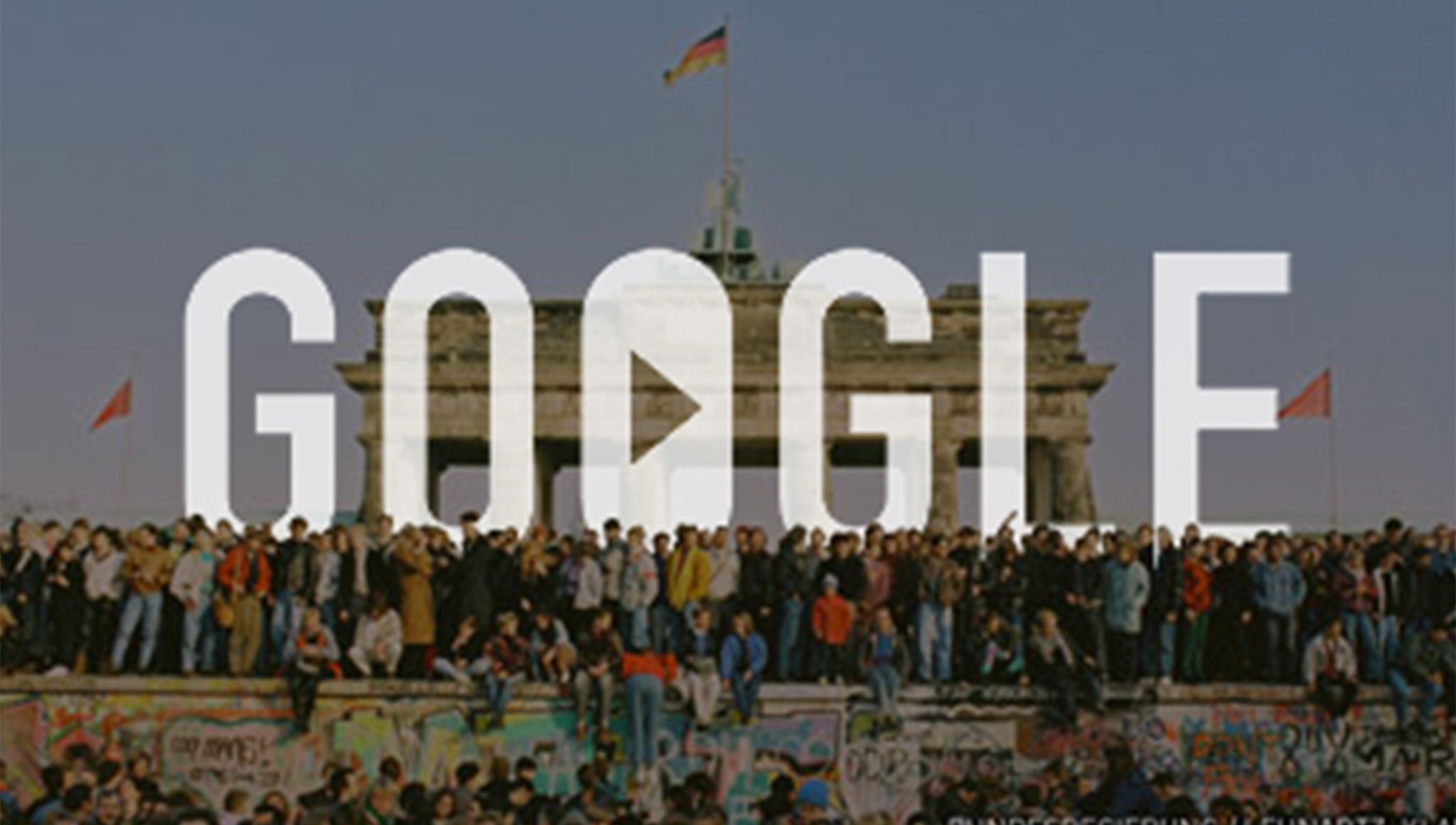Fall of the Berlin Wall: Google commemorates 25th anniversary in video Doodle
Video shows joyous atmosphere of evening of 9 November 1989

Today marks the 25 years since the fall of the Berlin Wall and Google has marked the occasion with a video Doodle.
When it was toppled on 9 November 1989, it marked the end of 30 years of division in Germany and paved the way for the official reunification of Germany in 1990.
The Wall had been constructed overnight on 12 August 1961 to separate the communist-controlled East Berlin from West Berlin, and originally took the form of a barbed wire line in the road, before becoming a fence, and then a fortified pair of walls with a huge no man's land between.
Those still living in the communist GDR awoke on 13 August to find themselves separated from friends, family and colleagues in the West.
The finished wall was made up of a 66 mile concrete section that was 3.6 metres high, with a further 41 miles of barbed wire fencing and more than 300 manned look-out towers.
It did not just go through the centre of the city – it completely encircled all of West Berlin, which was surrounded by the communist GDR.
Raymond Depardon's images of the Berlin Wall
Show all 6By 1949, Germany had become two separate countries - The Federal Republic of Germany (West Germany), run by the Allies, and the German Democratic Republic (East Germany), run by the Soviet Union and although Berlin was in East Germany, as the capital it was also shared between Britain, France, America and the Soviet Union. The Berlin Wall was East Germany's way of keeping East Germans from fleeing into the West.
The Wall divided friends, families and loved ones, causing people on both sides to lose their jobs and livelihoods if trapped on the wrong side.
For the 28 years it stood, up to 200 people are believed to have died trying to cross the Wall, although estimates vary. Many lost their lives along the heavily fortified “death strip”, which contained anti-vehicle trenches, barbed wire and beds of nails under blinding floodlights.
Throughout the time of the Wall's standing, East Berliners became increasingly frustrated at the prosperity and freedom offered across the border and denied from themselves, and following revolutions against the Soviet Union elsewhere, they began to demand free passage to the West.
With protests culminating on the night of 9 November, confused guards opened the gates at approximately 10.45pm after East Berlin's Communist party spokesman, Günter Schabowski had announced that passage would be allowed "immediately" earlier in the evening.
Though protesters began dismantling parts of the Wall during the night, its official demolition did not get underway until summer 1990.
The Google Doodle shows a video depicting the joyous scenes as West Berliners greet their Eastern counterparts on the night in 1989, before showing parts of the Wall in their new homes around the globe, in the likes of London, Seoul, Cape Town and Madrid.
Subscribe to Independent Premium to bookmark this article
Want to bookmark your favourite articles and stories to read or reference later? Start your Independent Premium subscription today.

Join our commenting forum
Join thought-provoking conversations, follow other Independent readers and see their replies